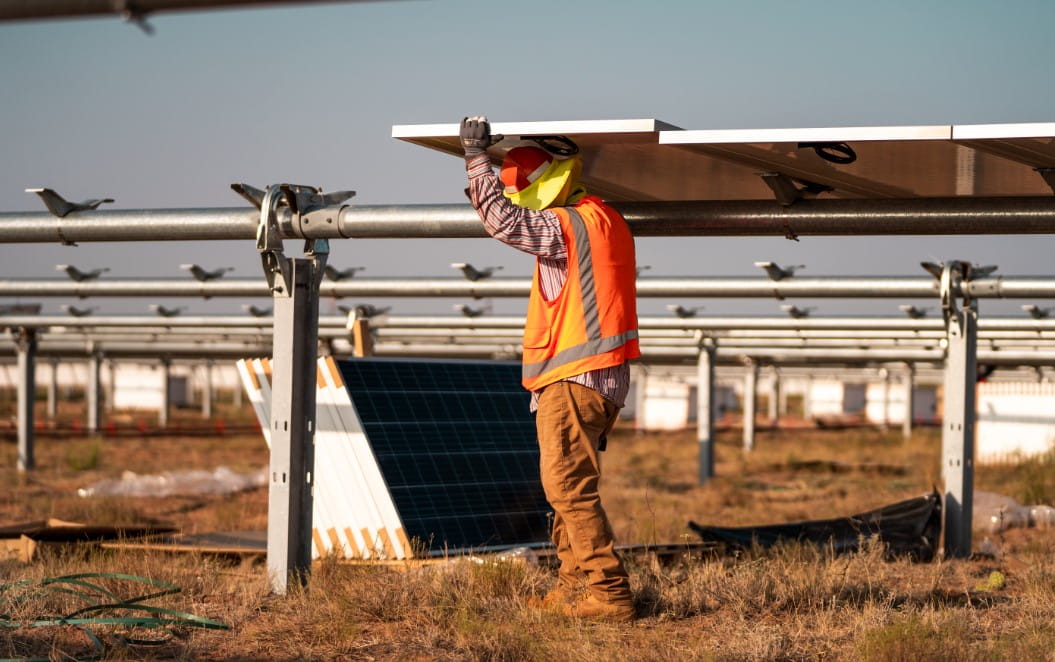
Ørsted commits to reuse or recycle all solar panels

Ørsted is the world’s first energy developer to commit to reuse or recycle all solar panels from its global portfolio of solar farms with immediate effect.

Ørsted is the world’s first energy developer to commit to reuse or recycle all solar panels from its global portfolio of solar farms with immediate effect.
Solar energy is a key technology for the green energy transition and for limiting global warming. The deployment of this technology requires vast amounts of virgin materials. The mining of these has environmental and social impacts, and competition to secure access to these materials is on the rise.
To lower dependency on virgin materials, a key solution is to reuse or recycle end-of-life solar panels and bring the materials back into manufacturing.
Today, reusing and recycling solar panels is limited, and landfilling is still common practice. This means that materials with a high value to the green energy transition are simply let go to waste.
Ingrid Reumert, Senior Vice President, and Head of Global Stakeholder Relations at Ørsted, says:
"We want to create a world that runs entirely on green energy, and we want to do it in a sustainable way. Addressing the most critical waste problem of the solar industry, while mitigating social and environmental impacts in the supply chain, is essential to doing so. This is an industry-first commitment and complements our already existing ambition to reuse or recycle all wind turbine blades.”
Taking action through new partnership to reuse or recycle modules
Today, Ørsted is announcing a new partnership with SOLARCYCLE, a technology-based solar recycling company, to process and recycle Ørsted’s end-of-life solar panels from its projects across the US, which is one of the main solar markets for Ørsted.
Ingrid Reumert continues:
“With this global solar commitment, Ørsted is leveraging its position as a leader in sustainability and renewable energy to incentivise the creation of a market for – the recycling of solar panels – and with the SOLARCYCLE partnership, we’re taking the first tangible steps to ensure that critical materials needed for green energy will be reused or recycled.”
SOLARCYCLE’s recycling facility in Texas extracts the valuable materials from panels, including metals like silver, copper, and aluminium, and materials such as glass and silicon.
SOLARCYCLE can take these materials and refine them to make the next generation of newer, higher-efficiency solar panels.
Ørsted has been growing its onshore portfolio in the past few years with the ambition of reaching 17.5 GW of wind and solar PV capacity for its global onshore portfolio by 2030.
For further information, please contact:
Media Relations
Thor Wilkens
+45 99 55 44 07
Investor Relations
Rasmus Keglberg Hærvig
+45 99 55 90 95
About Ørsted
The Ørsted vision is a world that runs entirely on green energy. Ørsted develops, constructs, and operates offshore and onshore wind farms, solar farms, energy storage facilities, renewable hydrogen and green fuels facilities, and bioenergy plants. Ørsted is recognised on the CDP Climate Change A List as a global leader on climate action and was the first energy company in the world to have its science-based net-zero emissions target validated by the Science Based Targets initiative (SBTi). Headquartered in Denmark, Ørsted employs approx. 8,000 people. Ørsted's shares are listed on Nasdaq Copenhagen (Orsted). In 2022, the group's revenue was DKK 132.3 billion (EUR 17.8 billion). Visit orsted.com or follow us on Facebook, LinkedIn, Instagram, and Twitter.
About the agreement with SOLARCYCLE
SOLARCYCLE’s recycling technology can extract 95 % of the value from solar panels. As panels arrive at the facility, SOLARCYCLE evaluates whether they can be reused on site. If a panel cannot be reused, SOLARCYCLE runs the panel through its advanced recycling process. The aluminium frame and junction box are removed, the glass is delaminated, and the remaining panel is shredded. The shredded materials go through a proprietary process to recover valuable metals, such as silver and copper, and separate the plastics. The company returns materials back to the supply chain, including to domestic solar manufacturers.